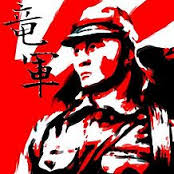WWI Timeline
Comprehensive Year-by-Year Timelines with Photos Year Timeline Title Highlights 1914 War Erupts Pre-war Alliances; Belgium Invaded; Battle of Tannenberg; Battle of the Marne; First Battle of Ypres; Trench Warfare Begins 1915 A Global Conflict Poison Gas First Used; U-Boat Warfare Begins; Second Battle of Ypres; Gallipoli Landings; Lusitania Sunk; Italy Enters War 1916 The Blood Letting Battle of Verdun; Sea Battle of Jutland; Russian Brusilov Offensive; Battle of the Somme; French Nivelle Offensive; Romania Enters War 1917 The Rage of Men Zimmermann Telegram; Russian Revolution; America Enters War; French Mutiny; Third Battle of Ypres; Caporetto Attack; British Tank Attack 1918 A Fateful Ending German Spring Offensives; First American Action; Allied Counter-Offensives; Armistice Ends Fighting; Treaty of Versailles; Post-war Germany source: http://www.historyplace.com/worldhistory/firstworldwar/index.html




